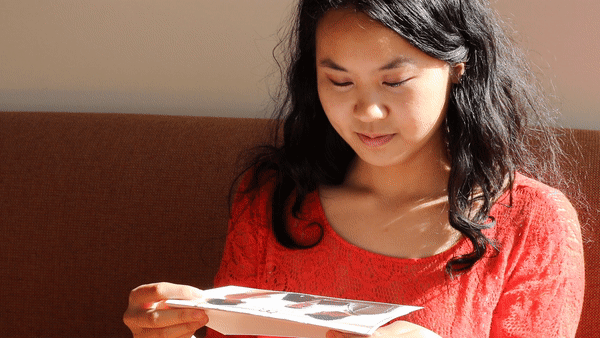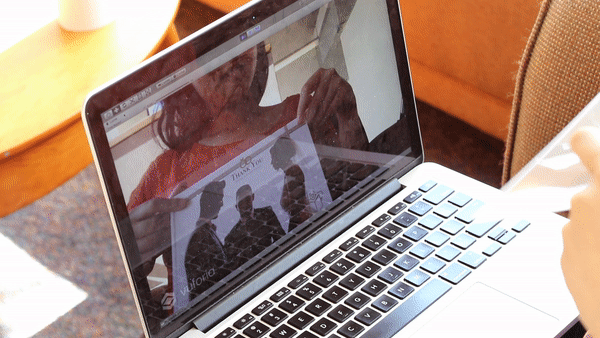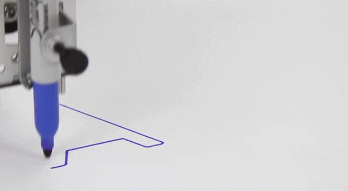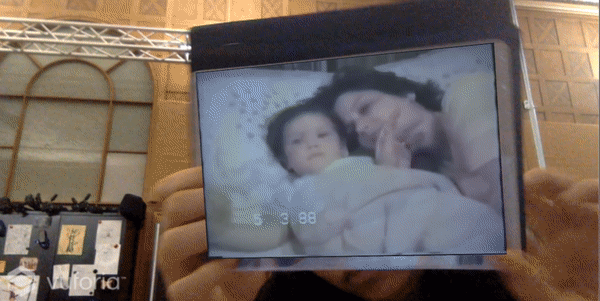Paper Hearts
Introduction
In my Digital Service Innovation Design class (under the Human-Computer Interaction Institute), the class was given an assignment to create a start-up business with a starting MVP pitch. Through many pivots and iterations, we came up with a digital and physical startup product. In the end, my team and I created a thorough sales pitch and won third place for the highest funded investor pitch.
Overview: Our startup business is a product that came out of finding a middle ground for digital and analog note taking. Our product takes the benefits of both to create a website experience where you can send personalized handwritten thank you cards to people in your wedding registry in a mass manner.
Problem Space: How can you write thank you cards in a mass manner but make it personalized and save time?
Solution: A website that allows you to personalize wedding thank you cards online, add in the names and gifts in the wedding registry from the message template, and personalize it some more by matching your handwriting as the font.
Role: Designer, Research, UX, Illustrator, Print, Augmented Reality Development, Video
Tools: Illustrator, After Effects, Unity and Vuforia
Collaborators: Frank Teng, Gierad Laput, Xi Zhang, Selena Zhen
Duration: 7 weeks
Vision Video
Phase 1: Discovery
At first, we were mesmerized by BuJos, which were personalized bullet journals with dotted grids for people to personalize their own note taking. We were interested in creating our own BuJo brand, where people can marry the personalization aspect of analog note taking, and the neat and quick benefits of digitalization.
Research
We went online to research about the benefits and trend of BuJos. This would inform us about what features we could implement in our product.
What are BuJos and what are other findings in the note taking product sphere?
BuJos are trending popular in social media posts (ex: #bulletjournal has 1.7 million posts on instagram)
A movement called “Quantified self” often referred to as life logging, that centers around technology to promote self image
Journals are getting alot of attention in health and wellness state
Interview
We then interviewed people to see what they thought about BuJos, their benefits, and their fallbacks.
We found that for busy professionals/students:
The flexibility of free form journaling is key
Analog notetaking feels more personal
Too much freedom in journaling can be overwhelming; there needs to be structure
Productivity apps are a nice option because of its convenience, structure, and neatness
We then compared analog and digital note taking. We wanted to see if we could create a product that takes in the benefits of both.
Why Paper
More free flow, able to express what you want
Less distractions
Use as creative outlet, can color
Medatative
Why Digital
Ubiquitous, accessible anywhere
Convenient, has a source of light
Penmanship is not worried
Can attach muti-media to notes
Brainstorming
Based on the research, we decided to invent this personalizable note taking app where you can build your own notebook by adding and dropping modules, controlling the amount of pages, and designing your own research.
Other ideas in the gratitude sphere were:
A chrome extension where creating custom gratitude notes are easier to do and more readily available. It may also feature tips on mindfulness and featured DIY crafts
Alexa skill for sending a gratitude message instantly - through funny music or voice filters, make it your own
A website with many printables paper objects (like oragami) where you can quickly construct the “gratitude” objects and have AR tech detect it, and a delightful a 3D experience will pop up displaying gratitude. An easy and cheap option where it could be dispersed widely
Key Insights:
The personalization aspect, we found in our interviews, was the main reason why people wanted to take notes physically and in BuJos, because they can be creative, expressive, it was therapeutic, and it made them feel good. However, there were also benefits of digital note taking and processes as it made it easier to find things, it was neat, and you wouldn’t lose it.
Market Analysis
We then did a market analysis to see if this model could make money as a startup. Throughout the project, we cared about two questions: 1) Are we serving a segment of the population that desperately needs this product? And 2) Will they pay for it? We found that people value high end notebooks and we could make make money through high profit margins. However, we found similar services that already exists, such as TrulyMine, which didn’t do too well in the market
First Pivot: Finding a Narrower Scope
After finding that the first model probably wouldn’t work based on the market analysis, we scoped down our idea, this time focusing on ad hoc gratitude, after being interested in the idea of how writing in notebooks or in cards can increase wellbeing and make the person feel good, upon reflection.
Our new idea was a ‘gratitude journal’ where you can write impromptu notes with the convenience of writing it in a book, to promote gratitude and mental well being.
Persona
Our new persona was a mother, who engages in many social activities that make them send thank you notes (birthday, teacher appreciation, weddings). We found that the major pain point during our interviews was that it was time consuming to write a handwritten letter.
Market Analysis
We researched if there was any potential for the greeting card industry to grow. We found that there was potential, as the greeting card industry was a $6.5 billion dollar business. However, we found that our users were still not narrow enough and they did not need the product. Our last pivot focused on finding desperate customers
Last Pivot: Finding Desperate Customers
We found that in the wedding industry, it is proper etiquette to hand write every thank you card to each person. However, it is a painstaking process.
Interview
Pain Point: We then interviewed wedding couples and found that because of social expectations, wedding couples are in desperate need of a solution that will manage the writing, tracking, and sending of thank you cards in a more personalized and convenient way
Market Analysis
We found that weddings are marketable. There was a product opportunity gap in that many digital services don’t offer a level of personalization and convenience that is acceptable for wedding etiquette standards.
Our Final Product
Our final product is Paper Hearts: A digital service for writing, sending, and personalizing wedding thank you cards. You can personalize your wedding thank you card online, add in the names and gifts in the wedding registry from the message template, and personalize it some more by matching your handwriting as the font. The cards are now ready to be delivered.
Phase 2: Design
Product: Paper Hearts offers a unique level of personalization and convenience. Instead of taking months, the task can be completed in a single afternoon, without extra costs.
How does it work?
Couples import existing data sources, such as their wedding registry. Our tracks names, received gifts and addresses.
We can use hand writing detection to search matching handwritten fonts.
Users can then create templates and “fields” that they want to customize. That’s it! We take care of shipping and delivery.
One feature of customization is adding Augmented Reality bits to your card. A video will play on top of an image you took to relive your memories. This was inspired by my project, Augmented Reality Photo Album
Sketches
Prototype
Physical Cards From DiGital Service
Product Roadmap
Eventually, we want to invest in technology, adding augmented reality elements to further personalize the wedding and relive that happy moment. We eventually want to expand to bar mitzvah, college admissions, and etc. To further personalize it, we want to invest in drawing plotter based handwriting automation

















